|
The Short Story of a Long History Cheraw, South Carolina has such an indepth history, we decided to break it up into 3 parts. Soon we will have an exact timeline of events among other things. This page is a brief overview of the towns history in general. Please visit the Music and the Old St. Davids Church section for a brief overview of these histories as well. The Cheraw and Pee Dee Indians were the earliest known inhabitants of what in now Chesterfield County. Of Siouan stock, the Cheraws were the dominate tribe in the upper Pee Dee. They reached the height of their power around 1650 and maintained a wall fortified village on the river hill close to present day Cheraw. Disease greatly decimated their population after a time, and they joined the Catawba Confederacy, leaving only their names, well established trading routes,, and by the time of the Revolution, a few scattered families. A few settlers began moving here in the 1730's but the first major settlement in the upper Pee Dee was near present day Society Hill where the Welsh Baptists were given a large land grant in 1736 by the British government. As the "Welsh Neck" grew, development continued along the river and eventually concentrated around the convergence of the old Indian trading paths at Cheraw. Most of Cheraw's early settlers were English, Scots, French or Irish. Two of the earliest of these were James Gillespie and Thomas Ellerbe who started a trading center and water mill at the Cheraw Hills around 1740. By 1750 Cheraw was one of six places in South Carolina appearing on English maps and was an established village with a growing river trade. Thomas and Eli Kershaw came to the area in 1750 and were later granted part of the present town of Cheraw. They formally laid out the street system with broad streets and a town green. By 1830, the streets were lined with triple rows of elm trees. Some of the median trees remain, particularly on Third Street, but many were removed at the turn of the century to put in water lines. The Kershaws called the town "Chatham" after the Earl of Chatham, William Pitt, but this never seemed to have had wide acceptance, and Cheraw or Cheraw Hill continued to be used interchangeably with Chatham. Cheraw has been the official name since the town's incorporation in 1820. During the Revolution, Cheraw was the center of much unrest sometimes being held by the British and sometimes by the patriots. Gen. Greene's army had a camp of repose just across the river, and St.David's church was used by both armies as a NEXT |


|
Old St. Davids Church in Pre-Revolutionary reconstruction. |

|
About Cheraw History |
|
AuctionSouth.net |

|
Cheraw Sale |
|
Phone: 800-599-7188 843-479-6856ax: 843-479-6810 |

|
CONTACT US |